Originally published in 2004 as part of chapter 6 of Larry Portis‘ book about a history of French music, “French Frenzies”, the chapter entitled “the poverty of french rock ‘n’ roll “
A kind of obituary for the former French President of Pop…although it covers lots of other aspects of French rock in the late 1950s – early 60s
 Johnny Hallyday/Jean-Philippe Smet with his mate – former French President Sharko
Johnny Hallyday/Jean-Philippe Smet with his mate – former French President Sharko
(originally published by me on Libcom Blog)
This is an excerpt from chapter 6 of Larry Portis‘ book French Frenzies. The full version of this chapter is here.
Larry Portis died on June 4, 2011 near Ales in the Languedoc-Roussillon region of the South West of France. He died suddenly of a totally unpredictable heart attack, at the tender age of 67, almost 68.
The following is an example of the originality of his research, which, despite its academic stance, is full of fascinating facts and insights, which can form the basis for a more proletarian critique of musical forms. Despite all its faults, it’s a really good read. Enjoy!
The Poverty Of French Rock ‘n’ Roll
The advent of rock and roll in France was not a social phenomenon of great depth or importance as it was in the United States or Britain. The abrupt commercial breakthrough of rock and roll in France did not shake up the music industry so much as to create new marketing possibilities….
In the United States, the beginnings of rock and roll were in the spontaneous fusion of African-American rhythm and blues and European-American country and hillbilly music. In France, the beginnings of indigenous rock and roll lay in the efforts of individuals to convince record producers that such a music should he created because the market already existed. In the United States, the music was the product of real social forces, in France it was primarily a commodity created by merchandisers. In the United States it was a social phenomenon. In France it was a cultural epiphenomenon. In the United States, legions of performers also followed the lead of artists whose cultural and social existences were sources of primary musical inspiration, but in France the artificiality of this kind of aesthetic appropriation was coupled by the ultimate necessity to conform to established social relations and musical culture. The dynamics of this process are amply illustrated in the career of the “French Elvis Presley” – Johnny Hallyday.
Born Jean-Philippe Smet in Paris in 1943, the future Johnny Hallyday was an early customer of the Golf-Drouot , a former indoor miniature golf course on the corner of the boulevard Montmartre and the rue Drouot converted into a club for teenagers by Henri Leproux in 1957 (it is now a McDonalds restaurant). At the Golf-Drouot the latest records could be listened to on a jukebox as young people mingled and danced, free from parental or adult supervision.
This breaking away from parental control is an important factor in the attraction of rock and roll in France. Although the “moral revolution” of Philippe Pétain no longer existed as a political and social program, France was nonetheless a bastion of conservative moral codes and the patriarchal family. In evaluating the attitudes of French youth in the 1950s and 60s, it should be kept in mind that women had the right to vote only since 1946 and that wives could not obtain a checking account without their husbands signature until 1966. In such a cultural context, the furor aroused by the new attitudes symbolized in Godard’s Breathless is understandable.
Like the character played by Jean-Paul Belmondo in Godard’s film, Johnny Hallyday was typical of post-war youth, detached from the experiences of the economic depression, war and resistance. Identification with American music was important in giving French youth the confidence necessary to oppose prevailing moral codes.
The young Johnny Hallyday was a privileged person in this milieu. Adopted by a cousin when he was very young, his “stepfather” was an American acrobatic dancer who toured Europe. The world of show-business and American musical culture were, therefore, familiar to Hallyday, whose height, blonde hair and regular features distinguished him at a time when James Dean was the model of American cool. Nicolas Ray’s film, Rebel Without a Cause was released in France in 1955 with the title translated as La Fureur de vivre , the rage to live. The handsome and carefree Hallyday often brought a guitar to the Golf-Drouot, where he sang Amerian hits and pretended to be an American in order to impress his peers, especially the girls.
In December 1959, he performed on stage at the Marcadet Palace , catching the attention of a young songwriting team (Jil et Jan) who introduced him to a record producer, Jacques Wolfson of Vogue. In March 1960, Hallyday’s record “Souvenirs, Souvenirs” was released and became a hit. It was this success that convinced record companies in general that there was a lucrative, teenage market for the new music.
The rush was on. The French record companies were now as desperate to sign rock and roll singers as the American producers had been in 1955. The Golf-Drouot became the talent scout’s mecca. Its proprietor, Henri Leproux, explained years later how “all the artistic directors (of the record companies) came looking for the rare bird who might be another Johnny Hallyday. Any little guy who got up on the stage at the Golf-Drouot and who could sing a bit was in a recording studio a few days later.” [Ibid., p.11-12]. It was this combination of enthusiastic teenagers anxious to imitate their American idols and record companies hoping to profit as quickly as possible, that created French rock and roll.
Within a matter of months, the first wave of the new recording stars was signed-up. Eddy Mitchell (Claude Moine) worked at a bank across the street from the Golf-Drouot . He became the singer of the group Les Chaussettes Noires (The black sox) signed by Barclay. Jacques Dutronc was the guitarist of El Toro et les Cyclones signed by Vogue (El Toro was a stockboy at the department store Galéries Lafayette , down the street from the Golf-Drouot . By the end of 1960, the record companies recorded other amateurs, such as Frankie Jordan (Claude Benzaquem) and Sylvie Vartan, who also became stars.
The artistic credentials of these new performers were meager. Jordan was a dental student who dabbled in the new music in his spare time. Vartan was the sister of the studio orchestra leader Eddie Vartan and was signed because the promoter, Daniel Filipacchi, thought she was cute.
Non-musical factors had to be used in the selection of both artists and song material, for the record producers had absolutely no idea of what constituted talent in this realm of musical creation. Ultimately, however, the formula for success and quick profits was deceptively simple. The producers merely read the American trade magazine Cashbox every week. In this way they determined which American hit songs should he adapted into French. Years later, Frankie Jordan recalled that Johnny Hallyday was generally given the number one hit on the American charts, Richard Anthony received the number two, and the Chaussettes Noires , himself, and others scrambled for what was left.
Another indication that the impulse behind the emergence of French rock had little to do with the aesthetic inclinations of French youth was the role played by commercial advertising. The Chaussettes Noires became the most popular rock and roll formation in France thanks to the Stemm stocking company, who used the group to promote its line of black sox with colored borders. For each pair of sox sold, a free entry to the Golf-Drouot was given to the customer. Thus, the Chaussettes Noires were created as a promotional gimmick concocted by Barclay Records, the Sternm company and the Golf-Drouot. Another of the three or four seminal French rock and roll groups, Dany Logan et les Pirates, was promoted by Barclay with funding from the French Milk Producers Association. Their big hit was “Je bois du lait” (I drink milk, slang for “I love it”). And this was only part of a general merchandising phenomenon. A consortium of record producers, impresarios and industrial-commercial interests, in fact, created the whole scene. [See Henri Leproux, Golf-Drouot. Le temple du rock, Paris, Rober Laffont, 1982, p.52-53, 58-59, 123-124.]
Such commercial exploitation is not surprising. It has accompanied every change in popular music from Champagne Charlie in nineteenth-century England to Michael Jackson and beyond elsewhere [See Larry Portis, Soul Trains: A Peoples’ History of Popular Music in the United States and Britain, College Station, Virtualbookworm, 2002]. What distinguished the inception of rock and roll in France was that the merchandising preceded the modification of popular culture. In France, financial interests did not simply exploit the performer-artists, they created them. For example, the singer Sheila was selected after the promoter Claude Carrère decided that there was room for a female voice among the existing stable of new singers.
Did something of musical value emerge out of this blatant huckstering? It would be unfair to say no. But it would be difficult to deny that for several years there was precious little in rock and roll à la française that could be seriously considered creative. Early French rock and roll was derivative to the point that the absence of originality was almost total.
Still, the enthusiasm of the young performers could not be denied, and this was what they communicated to their fans. No one, neither the artists nor their public, considered Johnny Hallyday to be the equal of Elvis Presley, Eddie Mitchell of Eddie Cochran, or Dick Rivers (Hervé Fornieri, singer of the Chats Sauvages (the wild cats) of Gene Vincent. A few of these early French rock and rollers developed into competent and even interesting singers and composers. Hallyday, Mitchell, Rivers, Dutronc and many others had good voices and must he distinguished from others, like Vartan and Sheila, who were more completely creations of record producers and who had little feeling for the music. What they all had in common was the knowledge that they were imitators.
The predominately “artificial” beginnings of rock and roll in France posed no artistic challenge to the record industry as it did in the United States. Consequently, to those French singers and musicians attracted to rock and roll, it left a deeply ingrained inferiority complex about their capacity to recreate the new music. The contrast between the French and British experiences in this regard could not be greater.
The superficiality of early French rock and roll also must be understood in terms of the rapidity with which it was introduced to the general public. Although a first few ventures were launched as early as 1958 (Richard Anthony and Danyel Gerard), the year 1959 still belongs to the prehistory of French rock and roll. The fact that rock and roll had not yet penetrated the popular music market is illustrated by the kinds of records released. For example, two records of that year that had the “feel” of the new music were Claude Piron’s “Docteur Miracle,” a cover of the American novelty hit “Witchdoctor,” and the jazz guitarist Sacha Distel’s “Scoubidou.” It is not really until the summer of 1960, after the release of Johnny Hallydays “Souvenirs, Souvenirs” in March 1960, that the new music clearly began to impose itself.
Even then, the other prominent performers did not record or have their first successes until the end of 1960 or the beginning of 1961. For example, Frankie Jordan did not record until December 1960, and the most popular of the groups, Les Chaussettes Noires, did not have their first hit until January 1961. The other famous group, Les Chats Sauvages, did not release their first record ( “Ma Petite amie est vache,” – My girlfriend is mean – a cover of Presley’s version of “Mean Woman Blues”) until spring 1961. These dates are important because at the very moment French rock and roll had built up a certain momentum, by Spring 1961, the record industry began to impose different artistic criteria in response to new trends in the United States.
It took US record producers several years to blunt the force of the new musical synthesis. It was not until 1961 that commercial rock and roll in the United States, created by individual performers heavily influenced by countrv, blues and gospel, was largely replaced by a simplistic dance music made by instrumental and vocal groups under the direction of entrepreneurs. In France, with their policy of blindly following the lead of the American hit parade, French producers immediately introduced the Twist, the Madison, and other dance crazes, compelling rock and roll performers to adapt to the new trend. By Summer 1961, the Twist already dominated the market.
The result of this marketing strategy was that the era of rock and roll in France was virtually over before it had a chance to really begin. On September 21, 1961, the first of the “yé ye” magazines, Disco Revue , appeared. When the more famous magazine, Salut les Copains (Hello buddies) first appeared in July-August 1962, French rock and roll was already transformed into the commercial “variety music” that retained only the tempo of rock and roll and the use of amplified instruments. The Big Beat had largely disappeared.
In this new context, it is not surprising that the original rock groups, Les Chaussettes Noires, Les Chat Sauvages, Danny Boy et les Pénitents began to have difficulties. According to Claude Jouffa, the end of 1961 was the “beginning of the end for French rock and roll groups.” The reasons were, however, multiple. To the change in fashion must be added the internal rivalries that frequently emerge when an artistic association of young people suddenly comes into possession of wealth and celebrity. Eddie Mitchell left the Chaussettes Noires in part for these reasons, but also because he was drafted into the army. The limited musical capacity of these performers was another factor. Two members of the Chaussettes Noires, for example, were replaced whenever the group recorded. This situation was far from exceptional, and Dick Rivers of the Chats Sauvages took pride in the fact that his group was virtually alone in its ability to record without the use of studio musicians. A certain rivalry existed between the Chaussettes Noires and the Chats Sauvages that probably contributed to the excitement, but already in 1961 Eddie Barclay, producer of the Chaussettes Noires, lured Willy Lewis, drummer of the Chats Sauvages , away from his group in order to weaken it. A few months later, Dick Rivers himself left to go solo.
French rock and roll performers were not allowed to develop their abilities, hut the market for the new popular music was cultivated assiduously. The organization of concerts by a highly integrated popular entertainment industry was a prime method in this regard. The first major rock “festival” was organized by the radio station Europe 1, the major promoter of French rock and roll music, and held on February 24, 1961 at the Palais des Sports. The star performers included Johnny Hallyday, Les Chaussettes Noires , Frankie Jordan, the American singer Bobby Rydell, and the Italian rock and roller Little Tony. The second festival was held five months later at the same location, set-up by the record company Pathé-Marconi and featuring Richard Anthony. These concerts were important not only in that they illustrated how successfully the music industry was able to cultivate the new market, but also because they revealed how a new youth cohort used the music as a means of cultural expression.
The pandemonium was such at the first concert that the authorities saw fit to ban them altogether. The financial interests involved overcame this official opposition, but the spectators’ violence continued. In June 1961, Richard Anthony, the French Paul Anka, not known for his incitation to riot, was struck by a beer bottle during his first number and was led away with blood streaming from his face. In November 1961, when the transplanted English-American rocker Vince Taylor appeared with the Chats Sauvages at the Palais des Sports , there was a veritable riot during which rows of seats were destroyed by the “blousons nojrs” (leather-jacketed gang members).
Such events quickly became the stuff of legend, especially as the first phase of French rock and roll passed quickly. When the magazine Disco Revue organized a festival on January 27, 1963 featuring Gene Vincent, nostalgia was already in the air. Danny Boy was without his Penitents, the Chats Sauvages were without Dick Rivers (replaced by Mike Shannon) and the Chaussettes Noires were left without Eddie Mitchell, drafted into the army in March 1962.
The climax of this cultural and commercial evolution occurred on June 22, 1963 with the outdoor concert organized by the radio station Europe 1 on the occasion of the first anniversary of the magazine Salut les Copains. Called “La Nuit de la Nation” (because it was held at the Place de la Nation), the concert foreshadowed such events as the funeral of Brian Jones and the Woodstock concert (both in 1969) in that the number of persons attending went beyond all expectations. 200,000 people filled the huge square. There was some fighting and destruction of property, and once again division among the authorities about the desirability of rock concerts and rock and roll music in general. On the one hand, established economic and political elites worried about the increasing alienation of youth. On the other hand, the entertainment industry worked aggressively to enlarge its market and to exploit the energies stimulated by their promotion of the music.
The yé yé Years
It was the famous “yé yé” phenomenon during the years 1962-66 that best symbolizes the almost total control exercised by the music industry over the direction of this type of popular music in France. A star system had been carefully established, based upon the creation of singing “idols” whose every move was controlled by managers and producers. Johnny Hallyday was the model in this regard. His ambition, sense of accommodation, and willingness to accept the advice of Lee Hallyday, his cousin and manager, set the tone for other artists.
The dependence of performers on the big companies is not, however, due only to their subservience. The centralization of industrial control in France has not allowed the incubation of individual talent in small recording companies as in the United States. The yé yé period was a unique phase in the consolidation of the French recording industry’s control through the modification of cultural sensibilities.
The sociologist Edgar Morin claims to have invented the expression “yé yé” which he used for the first time in an article in the newspaper La Mantle appearing after the famous “Nuit de La Nation” in June 1963. For him, the phenomenon was a kind of mass hysteria through which youth expressed a desire for community and emotional release in an increasingly “rationalized” society. The cry “yeah” repeated in many rock and roll songs, pronounced “yay”, was a literal affirmation of the desire for immediate gratification of youthful impulses. It meant: “we are young and want to live life to the fullest.” Morin recognized that in France the phenomenon was weaker than elsewhere: “in France, the explosive phenomenon of rock has been domesticated, whereas in the United States and in the Nordic countries it was much more violent.” [quoted in Jouffa, op. cit., p. 58] .
[SamFanto note: re. Edgar Morin – in the Situationist International’s post-May 68 analysis of the movement at that time “The Beginning of An Epoch”, they say the following about him: “The old apes of the intellectual reservation, lost in the muddled presentation of their “thought,” only belatedly started to get worried. But they were soon forced to drop their masks and make fools of themselves, as when Edgar Morin, green with spite amidst the hooting of students, screamed, “The other day you consigned me to the trashcan of history . . .” (Interruption: “How did you get back out?”) “I prefer to be on the side of the trashcans rather than on the side of those who handle them, and in any case I prefer to be on the side of the trashcans rather than on the side of the crematories!” ]
For the full version of this chapter (“The Poverty Of French Rock ‘n’ Roll”) see here
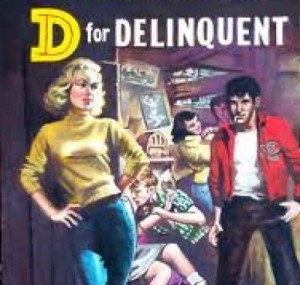
Hits as of 30/4/19: 3342
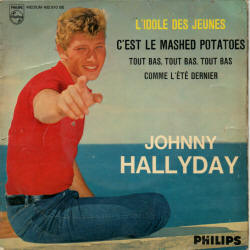
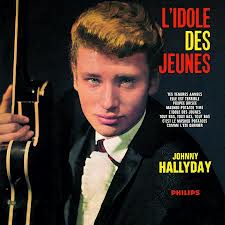
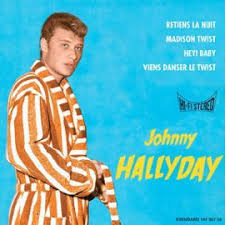
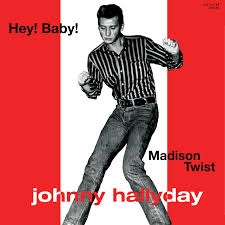
Leave a Reply